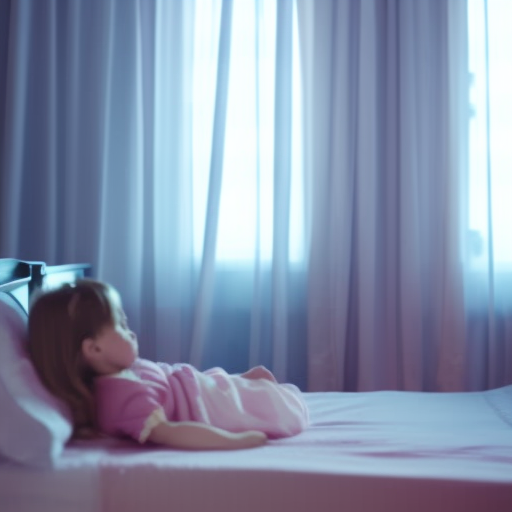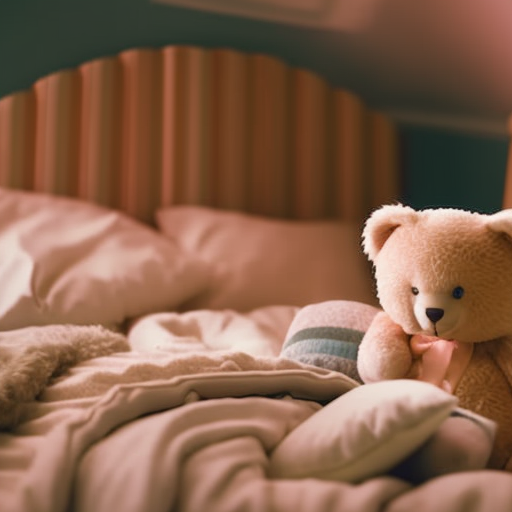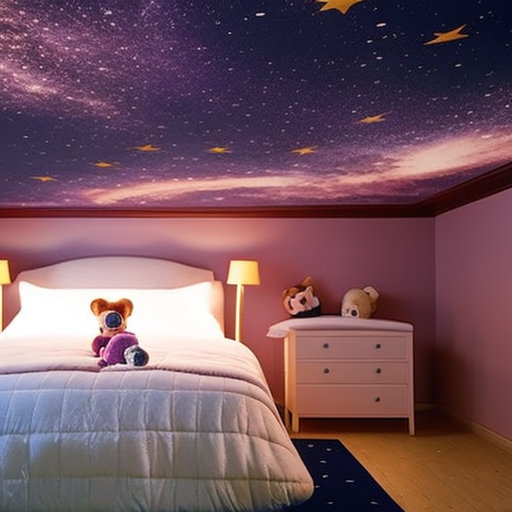"Cherishing Little Steps - A Haven for Baby and Family Journeys"
Effective Sleep Solutions for Preschoolers
They say that ‘early to bed, early to rise, makes a preschooler healthy, wealthy, and wise.’
As a parent, you understand the importance of your preschooler getting a good night’s sleep. However, it can be a challenge to find effective sleep solutions that work for your little one. You’ve tried everything from soothing lullabies to warm milk, but nothing seems to do the trick.
Well, fret not! In this discussion, we’re going to explore a range of strategies and techniques that can help your preschooler sleep soundly through the night.
So, get ready to discover some practical tips and expert advice that will have your little one snoozing peacefully in no time.
Key Takeaways
- Preschoolers require 10-12 hours of sleep each night.
- Establishing a consistent bedtime routine helps regulate the internal clock.
- Creating a calm and relaxing sleep environment promotes better sleep.
- Setting clear boundaries and expectations supports the sleep routine.
Understanding Preschooler Sleep Patterns

Understanding your preschooler’s sleep patterns is key to helping them establish healthy and restful nights of sleep. Preschoolers have unique sleep needs that differ from both infants and older children. By understanding their sleep patterns, you can develop effective sleep training techniques that will promote better sleep for your child.
Preschoolers typically require around 10-12 hours of sleep each night, along with a daytime nap. However, every child is different, and some may need more or less sleep. It’s important to observe your child’s behavior and mood to determine if they’re getting enough rest.
Preschoolers often experience sleep disturbances, such as night terrors or nightmares. These can be unsettling for both the child and the parent. By understanding your child’s sleep patterns, you can identify potential triggers and develop strategies to help them cope with these disturbances.
Sleep training techniques, such as establishing a consistent bedtime routine and creating a calm and soothing sleep environment, can greatly improve your preschooler’s sleep patterns. Consistency is key when implementing these techniques, as it helps your child establish a sense of security and predictability.
Establishing a Consistent Bedtime Routine

To ensure that your preschooler gets the restful sleep they need, it’s crucial to establish a consistent bedtime routine that promotes relaxation and sets the stage for a peaceful night’s sleep. By following a structured routine, you can help your child wind down and signal to their body that it’s time to sleep.
Here are three simple steps to help you establish a consistent bedtime routine for your preschooler:
-
Set a regular bedtime: Consistency is key when it comes to establishing routines. Choose a time that works for your family and stick to it every night. This will help regulate your child’s internal clock and make it easier for them to fall asleep.
-
Create calming rituals: Bedtime rituals can be comforting for your child and help them transition from playtime to sleep. Consider activities such as reading a bedtime story, having a warm bath, or practicing deep breathing exercises. These rituals will signal to your child that it’s time to relax and prepare for sleep.
-
Make the bedroom sleep-friendly: Creating a sleep-friendly environment is essential for a restful night. Ensure the room is cool, dark, and quiet. Remove distractions such as electronics and provide a comfortable mattress and bedding. These simple adjustments will help your preschooler feel more at ease and ready for sleep.
Creating a Calm and Relaxing Sleep Environment

Creating a calm and relaxing sleep environment is crucial for promoting restful sleep in preschoolers. By creating a sleep-friendly bedroom and utilizing soothing bedtime rituals, you can help your child unwind and prepare for a peaceful night’s sleep. Here are some expert tips to create a tranquil environment for your little one:
| Bedroom Tips | Rituals | Benefits |
|---|---|---|
| Keep the room dark | Establish a consistent bedtime routine | Provides a sense of routine and security |
| Maintain a comfortable temperature | Read a bedtime story together | Promotes relaxation and bonding |
| Reduce noise and distractions | Play soft music or use a white noise machine | Masks background noise and promotes tranquility |
To create a sleep-friendly bedroom, ensure that the room is dark, preferably using blackout curtains or blinds. This helps to signal to your child’s brain that it’s time to sleep. Maintaining a comfortable temperature in the room is also important, as a cool environment promotes better sleep. Be mindful of any noise or distractions in the room, as they can disrupt your child’s sleep. Consider playing soft music or using a white noise machine to create a soothing ambiance.
In addition to creating a sleep-friendly bedroom, utilizing soothing bedtime rituals can further enhance your child’s sleep quality. Establish a consistent bedtime routine that includes activities such as reading a bedtime story together. This not only promotes relaxation but also fosters a sense of security and closeness between you and your preschooler.
Setting Clear Boundaries and Expectations
As you continue to create a calm and relaxing sleep environment for your preschooler, it’s important to set clear boundaries and expectations to further support their sleep routine. Clear communication and positive reinforcement play a crucial role in establishing these boundaries and ensuring that your preschooler understands what’s expected of them.
Here are some effective strategies to help you set clear boundaries and expectations for your little one:
-
Consistent routine: Establish a consistent sleep routine with set bedtimes and wake-up times. This routine will provide structure and help your preschooler understand when it’s time to sleep.
-
Clear rules: Clearly communicate the rules and expectations surrounding bedtime. For example, let them know that they need to stay in their bed and avoid getting out unless it’s an emergency.
-
Rewards and praise: Use positive reinforcement to encourage your preschooler’s adherence to the sleep routine. Offer rewards or praise when they follow the rules and go to bed without any fuss.
-
Consequences: In addition to rewards, it’s important to establish consequences for not following the rules. For example, if your preschooler consistently gets out of bed, they may lose a privilege the next day.
Managing Preschooler Sleep Anxiety

Managing your preschooler’s sleep anxiety requires understanding their fears and implementing strategies to help them feel safe and secure at bedtime. Coping with sleep anxiety can be challenging, but with the right approach, you can help your child develop healthy sleep habits and overcome their fears.
One effective strategy is to teach your preschooler coping strategies that they can use when they feel anxious at bedtime. Simple techniques like deep breathing, positive self-talk, and visualization can help them relax and calm their mind. Encourage them to practice these techniques during the day so they become familiar and comfortable with them.
Relaxation techniques can also be helpful in managing sleep anxiety. Consider introducing activities like bedtime stories, gentle music, or guided meditation to create a calm and soothing atmosphere before sleep. These activities can help your child relax their body and mind, making it easier for them to fall asleep and stay asleep throughout the night.
It’s important to establish a consistent bedtime routine that includes these coping strategies and relaxation techniques. Having a predictable routine can provide a sense of security and comfort for your preschooler, reducing their anxiety about going to bed. Make sure to create a sleep environment that’s dark, quiet, and comfortable, as this can also contribute to a better night’s sleep.
Promoting Healthy Sleep Habits Through Nutrition

To promote healthy sleep habits through nutrition, it’s important to provide your preschooler with a well-balanced diet that supports their overall sleep quality. By incorporating sleep inducing foods and following some nutritional tips for better sleep, you can help your child get the rest they need for optimal development and growth.
Here are some ideas to consider:
-
Include foods rich in tryptophan: Tryptophan is an amino acid that helps the body produce serotonin, a hormone that promotes relaxation and sleep. Foods like turkey, chicken, bananas, and milk are good sources of tryptophan.
-
Limit caffeine and sugar intake: Caffeine and sugar can interfere with your child’s sleep patterns. Try to avoid or minimize their consumption, especially close to bedtime. Opt for healthier alternatives like herbal tea or water.
-
Provide a balanced dinner: Make sure your child’s dinner includes a mix of protein, complex carbohydrates, and healthy fats. This combination helps regulate blood sugar levels and promotes sustained energy throughout the night.
-
Avoid heavy or spicy meals before bedtime: Heavy or spicy meals can cause discomfort and indigestion, making it difficult for your child to fall asleep. Opt for lighter options that are easier to digest.
Limiting Screen Time Before Bed

Limiting screen time before bed is crucial for promoting healthy sleep habits in preschoolers. Excessive exposure to screens can disrupt their sleep patterns and make it harder for them to fall asleep. As an expert in sleep solutions for preschoolers, I understand the importance of creating a bedtime routine that excludes screen time.
To help you better visualize the impact of screen time on sleep, here is a table showcasing the negative effects of screens before bed, compared to the positive effects of other activities:
| Negative Effects of Screens Before Bed | Positive Effects of Other Activities |
|---|---|
| 1. Increased difficulty falling asleep | 1. Improved sleep quality |
| 2. Disrupted circadian rhythm | 2. Enhanced cognitive development |
| 3. Increased risk of anxiety and depression | 3. Strengthened parent-child bond |
| 4. Delayed melatonin production | 4. Increased creativity and imagination |
| 5. Reduced total sleep duration | 5. Enhanced language and communication skills |
Dealing With Nighttime Wake-Ups and Sleep Regressions
As we shift our focus to addressing nighttime wake-ups and sleep regressions, it’s important to understand how these challenges can arise even when screen time before bed is limited. Sometimes, despite our best efforts, preschoolers can experience difficulties staying asleep or regressing in their sleep patterns. It’s essential to approach these issues with expertise, clarity, and empathy.
Here are some effective strategies to help you deal with nighttime wake-ups and sleep regressions:
-
Create a consistent bedtime routine: Establishing a soothing routine before bed can signal to your child that it’s time to sleep. Include activities like reading a story, gentle massage, or listening to calming music.
-
Addressing night terrors: Night terrors can be distressing for both you and your child. To minimize their occurrence, ensure your preschooler is getting enough rest during the day, maintain a consistent sleep schedule, and create a safe sleep environment.
-
Dealing with sleep disturbances during potty training: Potty training can disrupt sleep patterns as children become more aware of their bodily functions. Encourage your child to use the bathroom before bed and consider using absorbent nighttime diapers to alleviate any anxiety about accidents.
Seeking Professional Help for Persistent Sleep Issues

If your preschooler is experiencing persistent sleep issues despite your best efforts, it may be beneficial to seek professional help. Professional sleep consultants can provide expertise and guidance tailored to your child’s specific needs. They have extensive knowledge and experience in dealing with sleep problems in preschool-aged children and can offer effective strategies to improve their sleep quality.
When considering professional help, it’s important to understand that there are various alternative sleep therapies available. These therapies can complement traditional methods and provide additional support for your child’s sleep issues. Here is a table outlining some common alternative sleep therapies:
| Therapy | Description | Benefits |
|---|---|---|
| Cognitive Behavioral | Focuses on changing negative sleep | Helps identify and modify behaviors |
| Therapy (CBT) | patterns and thoughts | that contribute to sleep difficulties |
| Mindfulness Meditation | Involves promoting relaxation and | Reduces stress and anxiety, leading to |
| awareness to improve sleep quality | improved sleep quality | |
| Acupuncture | Involves the insertion of thin needles | May help regulate sleep patterns and |
| into specific points on the body | promote relaxation | |
Frequently Asked Questions
How Much Sleep Do Preschoolers Need on Average?
Preschoolers need an average of 10-13 hours of sleep. A consistent sleep schedule is important, including regular naps. Naps help them recharge and improve their mood and behavior. Prioritize their sleep for their overall well-being.
What Are Some Common Signs of Sleep Anxiety in Preschoolers?
Feeling restless? Wondering if your preschooler is experiencing sleep anxiety? Look for signs like trouble falling asleep or nightmares. Causes can range from fear of the dark to separation anxiety. Luckily, there are tips for managing sleep anxiety in preschoolers.
Is It Normal for a Preschooler to Have Nighttime Wake-Ups?
It’s common for preschoolers to have nighttime wake-ups, but there are strategies to reduce them. Understanding preschooler sleep patterns can help you create a bedtime routine and sleep environment that promotes better sleep.
How Can I Establish a Consistent Bedtime Routine for My Preschooler?
You can establish a consistent bedtime routine for your preschooler by creating a calming environment, setting a specific time, and following the same steps each night. Consistency is essential for helping them relax and prepare for sleep.
What Are Some Healthy Nutrition Tips to Promote Better Sleep in Preschoolers?
To promote better sleep in your preschooler, try these nutrition tips. Encourage a bedtime routine that includes a healthy snack, like a glass of warm milk, and avoid sugary foods before bedtime.
Conclusion
In conclusion, implementing effective sleep solutions for preschoolers is crucial for their overall well-being and development. Research shows that around 25% of preschoolers experience sleep problems, which can have a significant impact on their behavior and cognitive functioning.
By establishing consistent bedtime routines, creating a calm sleep environment, and promoting healthy sleep habits, parents can help their preschoolers get the quality sleep they need.
Remember, seeking professional help is essential for persistent sleep issues. With patience, empathy, and a proactive approach, parents can support their preschoolers in getting the restful sleep they deserve.



I loved you better than you would ever be able to express here. The picture is beautiful, and your wording is elegant; nonetheless, you read it in a short amount of time. I believe that you ought to give it another shot in the near future. If you make sure that this trek is safe, I will most likely try to do that again and again.
I loved you better than you would ever be able to express here. The picture is beautiful, and your wording is elegant; nonetheless, you read it in a short amount of time. I believe that you ought to give it another shot in the near future. If you make sure that this trek is safe, I will most likely try to do that again and again.
Thanks for sharing. I read many of your blog posts, cool, your blog is very good.